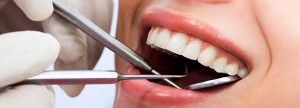
In preparation for orthodontics – when a person needs to have braces put in, there is a chance that some teeth will be pulled out in order to facilitate the proper alignment of the teeth. This is when there is crowding of the teeth, and when some teeth are too big for the proper alignment to happen.
Gum disease – aside from decayed teeth, a person may need to have their tooth extracted if the surrounding gums cannot support the tooth due to infection. Periodontal disease can cause a lot of damage that the bone and the gums that are supposed to hold the tooth in place can no longer do so. This is why tooth extraction is needed in this instance.
When a root canal is not enough – sometimes, when a tooth’s pulp is damaged, a root canal is all that is needed to remedy this. There are times however, when even a root canal is not enough, since the infection has become so severe, that the only recourse would be to remove the tooth itself. This is to prevent the spread of the infection.
When a wisdom tooth is seen to cause dental problems – some people find that their wisdom teeth do not really cause any issues when these come out, however there are a few who do notice that when these come out, the teeth that are already there begin to crowd. Sometimes, when wisdom teeth do not erupt properly, your dentist will also recommend extraction to help prevent the possibility of infection, or to remove an impacted tooth.
Types of Extractions You May Get
There are essentially two kinds of tooth extractions – simple and surgical. Simple extractions are those that involve teeth that are visible and can be easily worked on. The loosening of the tooth and the removal is used with simple instruments as well, with the anesthetic being used injected locally. These are often done quickly and without complications.
Surgical extractions are often done on teeth that are broken and underneath the gum line, or on teeth that have not yet erupted (wisdom teeth). This will often involve the making of an incision into the gum to get to the tooth that is to be removed. The kind of anesthetic that is to be used will also depend on the severity of the situation, with options ranging from local to general anesthesia.
What to Expect When Having a Tooth Extracted
Having a tooth removed often involves a bit of preparation. Your dentist will first take x-rays of your teeth, to determine how best to tackle the extraction. Once the plans for extraction are set, you will then be prepped for the procedure. You will usually find yourself being given anesthesia for this, although what type will usually depend on which tooth or teeth will be removed.
For the procedure, your dentist will tell you what to do and what not to do. For instance, a few days or weeks prior to extraction, you will be advised to avoid alcohol and smoking. You will also be told to wear comfortable clothing for that day, and to have someone with you to take you home after the procedure. You will also be given after-care instructions once the procedure is done, as well as prescriptions for the pain.
- St. Lawrence Dentistry Looks Forward To St. Patrick’s Day! - March 12, 2025
- Understanding Dental X-Rays and Radiation: What You Should Know - January 13, 2025
- Happy New Year from St. Lawrence Dentistry! - December 30, 2024









